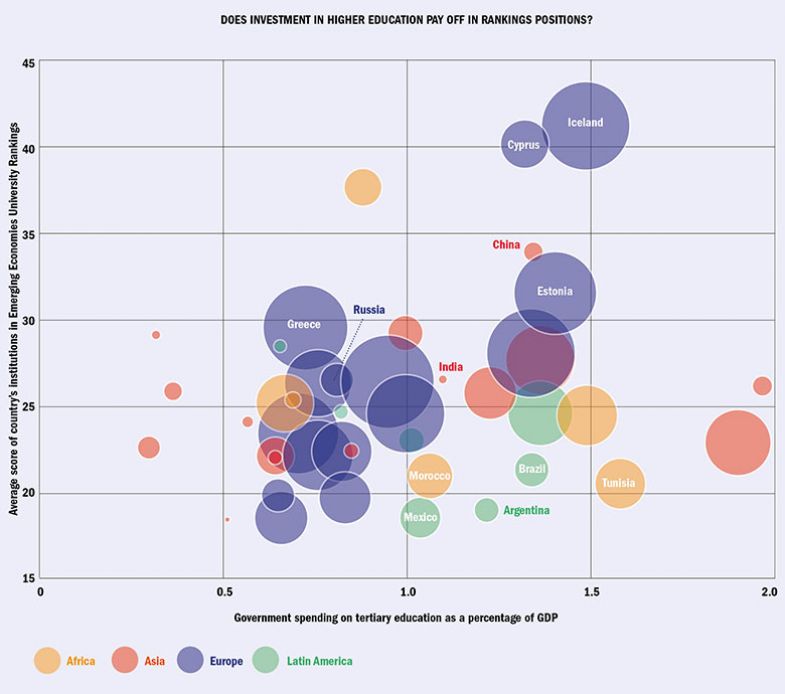Browse the full Emerging Economies University Rankings 2020 results
Countries’ overall performance in the Times Higher Education Emerging Economies University Rankings is linked more closely to geographic factors than to their level of economic development, the graph below suggests.
The chart shows the average overall score of nations in the ranking against the amount their government invests in tertiary education as a percentage of gross domestic product, while the size of the bubble represents the proportion of the university-age population who are students in ranked universities.
The findings reveal that there is little correlation between rankings performance and higher education investment or university access. The FTSE classification of a country as advanced emerging, secondary emerging or frontier also has little relation to its performance in the table.
However, many of the top performers in terms of overall score are to be found in Europe, such as Iceland, Cyprus, Estonia and Greece, while countries in Africa and Latin America, most notably Mexico, Argentina, Morocco and Tunisia, tend to lag behind.
This could be because Europe’s emerging economies benefit from regional neighbours with stronger traditions of higher education and research.
Four countries – Qatar, the United Arab Emirates, Saudi Arabia and Nigeria – do not have any recent data on government expenditure on tertiary education and were omitted from the chart.





